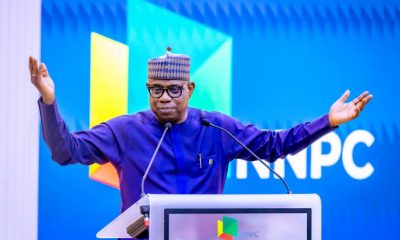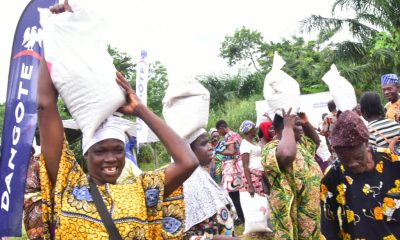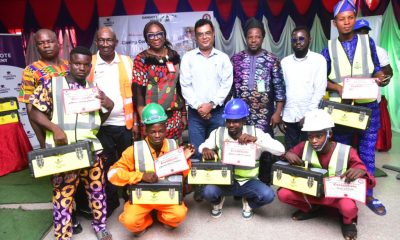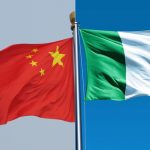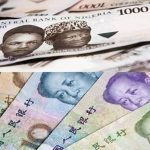Feature/OPED
PIA: Pollution and Host Communities
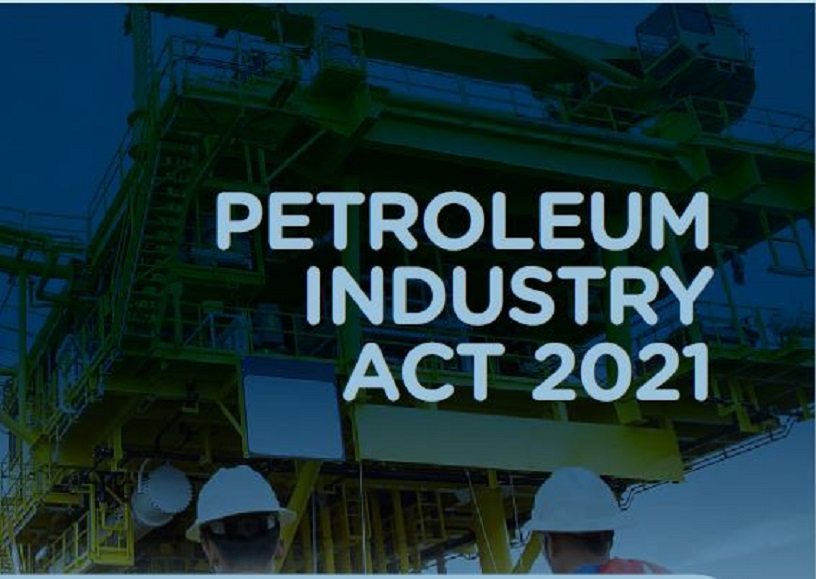
By Jerome-Maeario Utomi
Like every new invention which comes with opportunities and challenges, the passage by the National Assembly and signing into law of the Petroleum Industry Bill about two years ago by the President Muhammadu Buhari-led federal government, after about 17 years of protracted back-and-forth debates, was greeted with mixed feelings. While some hailed the development, others welcomed it with scepticism.
Aside from the belief that the coming of PIA will make innovation possible within the petroleum sector, those who expressed happiness about the coming of the Act predicated their joys on the fact that the provisions, as sighted in PIA, will assist straddle the middle ground in the nation’s petroleum sector which has for a very long time manifested, proved to be a sector with neither primed nor positioned potentials.
Supporting this assertion is the graphic description by PIA advocates of how the new Act will locate, harmonize and strategically engineer prosperity among the operators of the up, mid and downstream sectors of the oil industry while turning the host communities into a zone of peace and democratized development via the 3% allocation to the host communities as captured in Chapter 3 of the Act.
In the opinion of this piece, this joy expressed by stakeholders for reasons qualifies as apposite, especially when one commits to mind the fact that for decades, the operational templates of the players within the industry, particularly the International Oil Companies (IOCs), have for decades been reputed for non-compliance to set rules and devoid of international best practices.
In fact, industry watchers have, at different times, and places argued that before the advent of PIA, the sector was confronted by the following weaknesses; the existence of multiple but obsolete regulatory frameworks which characterize the oil and gas exploration and production in Nigeria.
Secondly, the federal government failed to get the nations’ refineries back to full refining capacity. Thirdly, the Petroleum Ministry’s inability to get committed to making IOCs adhere strictly to the international best practices as it relates to their operational environment.
Fourth and final is the non-existence of clear responsibility/work details and action plans for government agencies and parastatals functioning, monitoring/regulating the sector.
The above failures have, as a direct consequence; cast a long dark shadow on both the ministry and the sector.
To further explain these points beginning with the first challenge, it is worth noting that the business of crude oil exploration and issues of oil production in the country is regulated by multiple but very weak laws and Acts- of which most of these laws are not only complicate enforcement but curiously too old-fashioned for the changing demands of time. Thereby, creating loopholes for operators, especially the IOCs, to exploit both the government and host communities.
Some of these laws/Acts in question operated for over five decades without achieving purposes, and they include but are not limited to; the Petroleum Act of 1969, The Harmful Waste (Special Criminal Positions etc), Act 1988, Mineral Oil Safety Regulation 1963, Petroleum (Drilling and Production) Regulation 1969 (Subsidiary Legislation to The Petroleum Act), The off-shore Oil Revenue (Registration of Grants)Act 1971, Oil in Navigable Act 1968, Petroleum Production and Distribution (Anti Sabotage) Act 1975, Associated Gas Re-injection Act 1979, Associated Gas Re-injection (continued Flaring of Gas) Regulation, Associated Gas Re-injection (Amendment) Decree 1985, Oil Pipeline Act Chapter (CAP) 338, Laws of the Federation of Nigeria (L.F.N.) 1990, and Gas Flare prohibition and punishment) Act 2016 among others.
Even as the above remains lamentable, facts have since emerged that instead of providing the anticipated legal, governance, regulatory and fiscal framework for the Nigerian petroleum industry and the host communities, the Petroleum Industry Act (Act), like the other failed laws that it came to replace, has contrary to expectation become different things to different peoples.
To many, PIA is not only an evil wind that blows nobody any good but a toothless bulldog that neither bites nor barks. To others, it is but is a palliative that cures the effect of sickness while leaving the root cause to thrive.
To the host and impacted communities, the Act has become a first line of conflict between crude oil prospecting, exploration companies and their host communities. It is a law that has come to steal, kill and destroy. Members of this group have come to a sudden realization that nothing has changed.
Without going into specifics, concepts, provisions and definitions, there is also greater evidence that points to the fact that the underlying premise behind PIA enactment has been defeated, the eliciting reason for concern that what is currently happening between oil companies and their host communities may no longer be the first half of a reoccurring circle, but, rather the beginning of something negatively new and different.
Take, as an illustration, if PIA is fundamentally effective and efficient, why is it not providing a strong source of remedy for individuals and communities negatively affected by oil exploration and production in the coastal communities? If these frameworks exist and have been comprehensive as a legal solution to the issues of oil-related violations, why are the IOCs operating in the country indulging in selective implementation of the Act?
Why is the Act not enforced by the federal government and other relevant agencies? Why are these hosts and impacted communities still suffering at the hands of the crude oil exploration and production companies operating in the Niger Delta region?
While answers to the above questions are expected, this piece, however, believes that there are reasons why these issues raised about PIA failures and failings cannot be described as unfounded.
The facts are there and speak for it.
On 28th of March 2023, the people of Kantu/Odidi, host communities to Odidi Flow station, OML 42 in Gbaramatu kingdom, Warri South West Local Government Area of Delta State, staged a peaceful protest against the non-implementation of PIA.
While calling for holistic repair works on the Trans Forcados Pipeline (TFP), which runs through OML 42 in Warri South West LGA to Forcados Terminal in Burutu LGA of Delta State, the protesting communities gave the operators a 7-day ultimatum to commence genuine implementation of the PIA process and payment of the 3% of 2022 operating expenses as stipulated by the PIA with immediate effect to enable the communities to resume implementation of developmental projects in the communities, warning that failure to do so may lead to the shutdown of operational activities in the OML 42 Asset.
Lamenting that the TFP pipeline was constructed in the early 1960s and has outlived its lifespan long ago, leading to continuous pollution of the environment and destruction of the ecosystem, creating hardship for the locals, the communities stressed that TFP is one of the major pipelines destroying the environment because it has expired and cannot withstand the pressure of crude oil transported through it.
They, therefore, demanded full replacement of the said pipeline instead of the sectional repair works being planned by NEPL/NECONDE without recourse to its negative implications on communities and the environment, particularly since sectional repair works will not stop further leakages.
Kantu/Odidi protest occurred at a time when the dust raised by the 14 days ultimatum/threat issued to another oil company by the oil-rich community of Tsekelewu (Polobubo) in Warri North Local Government Area of Delta State was yet to settle.
In that particular ‘event’, the people of Tsekelewu (Polobubo) also threatened to shut down ongoing exploration activities of Conoil Producing Limited if the company failed to reach a definite agreement with the community on the implementation of Chapter 3 of the Petroleum Industry Act (PIA) for the Tsekelewu bloc of communities, supports this assertion.
The Host Community lamented that they adopted the option due to the seemingly snobbish attitude of the management of Conoil Producing, as the company’s management had refused to honour letters asking for a meeting with the TCDA on the issue of the PIA implementation.
Away from the persistent highhandedness of the IOCs, this piece is also of the position that PIA is as weak, defective and insufficient as the laws/Acts it was enacted to replace when it comes to pollution prevention, monitoring and control within the sector.
In fact, it will not be characterized as an overstatement to say that it shares the same body and spirit with the now rested Harmful Waste (Special Criminal Positions etc), Act 1988. The major defect with the referenced Act was signposted in its definition of harmful substance based solely on its impact on human beings and does not include its impacts on the environment and animals.
It focused only on the commission of any action or omission by persons without lawful authority. Thus, where an organization has a license to store waste resulting from production, they are seemingly omitted from the ambit of the Act, but the law failed to take into consideration the inadequate storage or inadequate waste management system by licensed firms or groups. Such failure or oversight is glaring and inherent in PIA.
Adding context to the colossal damage harmful substances arising from crude oil production have caused the nation, the National Oil Spill Detection and Response Agency NOSDRA reports show that oil spill incidents occurred 921 times in 2015, resulting in a loss of 47,714 barrels of oil, the highest within the period under review. In 2016, 688 cases of oil spills occurred, culminating in a volume of 42,744 barrels of oil. In 2017 and 2018, 596 and 706 cases of oil spills occurred and resulted in the spillage of 34,887 and 27,985 barrels of oil, respectively. Oil spills occurred on 732 occasions, spewing 41,381 barrels of oil in 2019, and 455 cases were recorded in 2020 with 23,526 barrels of oil. In 2021, companies reported 388 incidents, resulting in 23,956 barrels of oil.
The report also observed that oil spills should be closed off within 24 hours. And oil companies are required to fund the clean-up of each spill and pay compensation to local communities affected if the incident was the company’s fault.
Despite these beautiful provisions, there exists no appreciable instance within the period under review where such obligations to host communities have been obeyed. This piece also holds the opinion that under the PIA regime, no operator can claim a clean hand when it comes to obeying such laws in Nigeria, and the regulatory agencies have never bothered to hold them accountable for such failures.
Still on inefficiency and insufficiency of PIA provisions to effectively control pollution arising from crude oil exploration and production, this author, in a similar intervention, after a visit to the Niger Delta region, stated that a tour by boat of creeks and coastal communities of Warri South West and Warri North Local Government Areas of Delta state would amply reveal that the much-anticipated end in sight of gas flaring is actually not in sight. In the same manner, a journey by road from Warri via Eku-Abraka to Agbor, and another road trip from Warri through Ughelli down to Ogwuashi Ukwu in Aniocha Local Government of the state, shows an environment where people cannot properly breathe as it is littered by gas flaring points.
To a large extent, the above confirms as true the recently published report, which among other concerns, noted that Nigeria has about 139 gas flare locations spread across the Niger Delta both in onshore and offshore oil fields where gas which constitutes about 11 per cent of the total gas produced are flared.
Apart from the health implication of flared gases on humanity, their adverse impact on the nation’s economy is equally weighty. For instance, a parallel report published a while ago underlined that about 888 million standard cubic feet of gas were flared daily in 2017. The flared gas, it added, was sufficient to light up Africa, or sub-Saharan Africa, generate 2.5 gigawatts (Gw) of power or produce 50 million barrels of oil equivalent (boe) or produce 600,000 metric tonnes of liquefied petroleum gas (LPG) per year, produce 22 million tonnes of carbon dioxide (CO2), feed two-three liquefied natural gas (LNG) trains, generate 300,000 jobs, able to attract $3.5 billion investment into Nigeria and has $350 million carbon credit value’. This is an illustrative pointer as to why the nation economically gropes and stumbles.
Banking on what experts are saying, the major reason for the flaring of gases is that when crude oil is extracted from onshore and offshore oil wells, it brings with it raw natural gas to the surface and where natural gas transportation, pipelines, and infrastructure are lacking, like in the case of Nigeria, this gas is instead burned off or flared as a waste product as this is the cheapest option.
It, therefore, remains an ugly narrative that the choice to flare gas in the country is largely predicated on economies. This has been going on since the 1950s when crude oil was first discovered in commercial quantities in Nigeria.
While Nigeria and Nigerians persist in encountering gas flaring in the country, even so, has, successive administrations in the country made both feeble and deformed attempts to get it arrested.
In 2016, before the advent of PIA, President Muhammadu Buhari led administration enacted Gas Flare Prohibition and Punishment), an act that, among other things, made provisions to prohibit gas flaring in any oil and gas production operation, blocks, fields, onshore or offshore, and gas facility treatment plants in Nigeria.
On Monday, September 2, 2018, Dr Ibe Kachikwu, Minister of State for Petroleum (as he then was), while speaking at the Buyers’ Forum/stakeholders’ Engagement organized by the Gas Aggregation Company of Nigeria in Abuja, among other things, remarked thus; ‘I have said to the Department of Petroleum Resources, beginning from next year (2019 emphasis added), we are going to get quite frantic about this (ending gas flaring in Nigeria) and companies that cannot meet with extended periods –the issue is not how much you can pay in terms of fines for gas flaring, the issue is that you would not produce. We need to begin to look at the foreclosing of licenses’. That threat has since ended in the frames, as there has been little or nothing to get the threat actualized.
The administration also launched the now abandoned National Gas Flare Commercialization Programme (NGFCP), a programme, according to the federal government, aimed at achieving the flares-out agenda/zero routine gas flaring in Nigeria by 2020. Again, like a regular trademark, it failed.
Away from Buhari’s administration, in 1979, the then federal government, in a similar style, came up with the Associated Gas Re-injection Act, which summarily prohibited gas flaring and also fixed the flare-out deadline for January 1, 1984. It failed in line with the leadership philosophy in the country.
Similar feeble and deformed attempts were made in 2003, 2006, and 2008. In the same style and span, precisely on July 2, 2009, the Nigerian Senate passed a Gas Flaring (Prohibition and Punishment) Bill 2009 (SB 126) into law, fixing the flare-out deadline for December 31, 2010- a date that slowly but inevitably failed.
Not stopping at this point, the FG made another attempt in this direction by coming up with the Petroleum Industry Bill, which fixed the flare-out deadline for 2012. The same Petroleum Industry Bill (PIB) got protracted till 2021 when it completed its gestation and was subsequently signed into law by President Buhari as Petroleum Industry Act (PIA).
To win, the nation must borrow a ‘soul in order to raise a body’. They must seek solutions from the countries that are presently doing well in these areas where we are facing challenges. Part of that effort will require going beyond PIA to recognise the region as a special area for purposes of development. This demand cannot be described as unfounded as it is historically based, logical and factually supported.
Recall that the colonial government, long before independence turned down the demand for a Calabar/Ogoja/Rivers (COR) region/state. But identified the Niger Delta as a troubled spot and recommended to the then Federal Government that the region be regarded as a special area for purposes of development.
Without any shadow of a doubt, I hold an opinion that the federal government’s inability to treat the region as such set the stage for and nourished the restiveness in both the region and the sector.
Most importantly, the people of the region must be directly involved in the management of their resources.
Jerome-Mario is the programme coordinator (Media and Public Policy) at the Social and Economic Justice Advocacy (SEJA). He can be reached via [email protected]/08032725374.
Feature/OPED
Preventing Financial Crimes Amid Mounting Insecurity: Why Following the Money is Now a Survival Imperative

By Blaise Udunze
Nigeria today faces a sobering dual reality: a deepening security crisis and an entrenched financial-crime ecosystem that quietly feeds, sustains, and normalises that crisis. Across the North, Middle Belt, and parts of the South, kidnappers, bandits, insurgent cells, political actors, compromised security agents, and a complex chain of financial facilitators operate within a shadow economy of violence, one that generates billions, claims thousands of lives, and steadily erodes the authority of the state.
For over a decade, security experts and Nigeria’s international partners have warned that no meaningful progress will be made against insecurity unless the financial oxygen sustaining violence is cut off. Yet the country continues to prosecute its anti-terrorism efforts largely through military responses, as though the conflict could be resolved solely on the battlefield. What remains missing is a decisive, transparent, and politically courageous confrontation with the economic networks that make insecurity profitable.
This war is not only about guns and bullets. It is about money.
Money moves fighters.
Money buys weapons.
Money fuels political desperation.
Money underwrites chaos.
Until Nigeria addresses the financial pipelines behind its insecurity, the crisis will continue to reproduce itself.
Kidnapping: The Lucrative ‘War Fund’ Sustaining Insurgency
The rise in mass kidnappings is neither accidental nor spontaneous. It has evolved into a rational, structured, revenue-generating enterprise.
Appearing on Channels TV’s Politics Today in October 2025, Yusuf Datti Baba-Ahmed warned that insurgent and bandit groups now treat ransom payments as reliable “war funds.” The data support his claim.
A 2024 survey by the National Bureau of Statistics (NBS) found that Nigerians paid N2.2 trillion in ransom between May 2023 and April 2024. This astonishing sum does not account for unreported payments made through informal negotiators, mobile transfers, or unregulated community channels.
Kidnapping has matured into a fully formed economy with well-defined roles: negotiators, informants, logistics providers, cash couriers, and security collaborators. Proceeds are reinvested in weapons, motorcycles, communication devices, safe houses, and even land acquisitions.
In the words of a security analyst, “Every successful kidnapping is a fundraiser.”
Sabotage from Within: Keffi’s Explosive Memo and a System Built to Fail
If Nigeria’s external security threats are troubling, the internal compromises are even more alarming.
A leaked memo by Major General Mohammed Ali Keffi accused senior government and military officials of diverting billions of naira earmarked for arms procurement under former Chief of Army Staff, Lt. Gen. Tukur Buratai. Keffi’s allegations included:
– Weapons paid for but never delivered
– Falsified battlefield reports
– Civilian casualties mislabelled to justify inflated expenditures
– Political interference obstructing investigations into terror financing
His claims echoed the earlier warning by Gen. T.Y. Danjuma, who accused sections of the military of working in concert with armed groups and abandoning vulnerable communities.
Keffi’s memo became even more consequential following the 2025 detention of former Attorney General Abubakar Malami by the EFCC over allegations of money laundering, terrorism financing and suspicious financial activity linked to 46 bank accounts.
Together, these revelations paint a disturbing picture: even as Nigerians endure mass abductions, elements within the political and security elite appear to be enabling or shielding the financial networks behind the violence.
Why the Crisis Persists: A Financial Crime Lens
Nigeria’s insecurity cannot be divorced from the environment in which illicit finance thrives. Key enablers include:
- Informal Economies and Unregulated Cash Flows
With over 70 percent of rural transactions still cash-based, terror groups exploit:
– Hawala networks
– POS and mobile-money agents
– Cattle markets and mining sites
– Barter systems centred on livestock and grains
These channels operate beyond the reach of AML/CFT systems.
- Identity Fraud and Weak KYC Enforcement
– Criminal networks routinely open accounts with:
– Fake NINs
– Compromised SIM cards
– Recycled BVNs
– Mule identities
- Collusion within Financial Institutions
The EFCC estimates that up to 70 percent of financial crimes involve bank personnel, primarily through:
– Unauthorised cash withdrawals
– Suppressed Suspicious Transaction Reports (STRs)
– Manipulated internal alerts
- Weak Prosecution and Political Interference
Cases drag on for years, and many evaporate entirely before reaching court often due to political considerations.
- Ungoverned Spaces
Large territories across the North serve as hubs for:
– Arms trafficking
– Illegal mining
– Kidnap-for-ransom camps
– Cross-border smuggling
Public Patience Thins: NLC Moves to the Streets
Public frustration is reaching a boiling point. On December 10, the Nigeria Labour Congress (NLC) announced a nationwide protest scheduled for December 17, citing the “degenerating security situation” and the rise in mass abductions.
The NLC condemned the November 17 abduction of female students in Kebbi, noting that security personnel had been withdrawn from the school shortly before the attack. The union called the act “dastardly and criminal” and directed all affiliates and civil-society partners to fully mobilise for the protest.
This marks a significant shift. For the first time in years, Nigeria’s most influential labour body is placing insecurity at the centre of national mobilization, further underscoring the argument that the current crisis is not simply a security failure but a systemic breakdown of governance, accountability, and financial integrity.
The Financial Engine of Terror: The 23 Suspects Who Moved Billions
A Sahara Reporters investigation uncovered a network of 20 Nigerians and three foreign nationals allegedly linked to the financing of Boko Haram and ISWAP. Their transactions, running into hundreds of billions, were quietly channeled through personal and corporate accounts.
Among those named:
– Alhaji Saidu Ahmed, Zaria businessman: N4.8bn inflows
– Usaini Adamu, Kano trader with 111 accounts: N43bn inflows, N50bn outflows
– Muhammad Sani Adam, forex and precious stones dealer: N54bn across 41 accounts
– Yusuf Ghazali, a forex trader linked to UAE-convicted terrorists, operated 385 accounts
– Ladan Ibrahim, a Sokoto official, is accused of diverting public funds
– Foreign actors included the late Tribert Ayabatwa (N67bn inflows) and Nigerien arms dealer Aboubacar Hima, who moved over $1.19 million.
Strikingly, several of the suspects arrested in 2021 were quietly released without trial, continuing a pattern of impervious investigations and political bottlenecks.
This network confirms a painful truth: Nigeria’s insecurity is not driven solely by men wielding rifles in the bush. It is sustained by individuals in cities, businesses, and bureaucracies, people with access, influence, and remarkable financial mobility.
The Political Dimension: Irabor’s Revelation and the Unnamed Sponsors
The political undertone of Nigeria’s insecurity was reinforced by the former Chief of Defence Staff, Gen. Lucky Irabor (rtd), who admitted that politicians were among those financing terror groups. According to him, some trials were conducted “away from public consumption.”
His statement revived key questions:
– Why is the state shielding the identities of terror sponsors?
– Who benefits from the secrecy?
– What political consequences are being avoided?
Security sources told TruthNigeria that Nigeria’s published list of 19 terror financiers in 2024 represented only a fraction of the full network.
Baba-Ahmed’s accusation that former Kaduna Governor Nasir El-Rufai was part of the political forces that aggravated Northern insecurity, an accusation the former governor has previously denied, adds further urgency to demands for transparency.
The Human Cost: Expanding Killing Fields
Despite repeated assurances, violence continues to spread:
– 303 students and 12 teachers abducted in Niger State
– 38 worshippers kidnapped in Kwara
– Simultaneous raids across Plateau, Kaduna, Benue, and Niger
– Whole communities uprooted by weekly attacks
As Amnesty International observed, “In many rural communities, only the graveyards are expanding.”
SBM Intelligence now describes large portions of the North as “open killing fields,” areas where the state’s influence has collapsed, and community vigilantes have become the default security providers.
Expert Voices: Why Nigeria Must Finally Follow the Money
Security experts converge on a single message: Nigeria cannot defeat terrorism without dismantling its financial infrastructure. Dr. Friday Agbo, a security researcher, disclosed, “Terror groups survive because their financial lifelines remain untouched.”
Jonathan Asake, analyst and former SOKAPU president, said, “Publish the full Dubai list. Without transparency, impunity will remain the norm.”
Gen. Irabor (rtd.) revealed, “There are politicians involved. The conflict is multi-layered: ideology, criminality, and political manipulation.”
These assessments underscore one reality: ideology is secondary. Money is primary. It is the oxygen of Nigeria’s terror landscape.
What Must Change
Nigeria must elevate financial crime to the level of a national-security emergency. Key reforms include:
– Integrating BVN-NIN-SIM identity databases and upgrading real-time monitoring
– Targeting illicit markets: illegal mining hubs, cattle markets, unregulated border posts
– Deploying AI-driven analytics to detect layered transactions, mule networks, and ransom flows
– Strengthening bank compliance units and protecting whistleblowers
– Improving inter-agency intelligence sharing (EFCC, NFIU, DSS, NDLEA, Police, CBN)
– Criminalising unexplained wealth, especially in conflict zones
– Investing in safe-school infrastructure, rural policing, and local reporting channels
Choosing Truth Over Convenience
Nigeria’s two-front war is neither mysterious nor new. It is a well-documented, financially engineered crisis protected by silence, vested interests, and institutional decay. The NLC’s mobilisation signals a turning point; citizens are unwilling to accept official evasions while insecurity intensifies. To end this crisis, Nigeria must:
– Expose and prosecute terror financiers
– Purge corrupt insiders in the security system
– Dismantle ransom economies
– Strengthen financial intelligence
– End political protection for criminal networks
Until these reforms are pursued with integrity, billions will continue to move, weapons will continue to flow, and Nigeria will continue to bleed.
Blaise, a journalist and PR professional, writes from Lagos, can be reached via: [email protected]
Feature/OPED
Championing Ethical Sourcing Within Dairy Communities
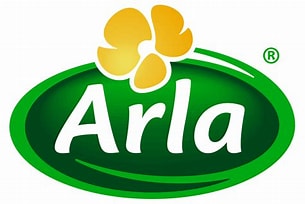
Human Rights Day often centres on themes of dignity, equity, and freedom. Yet for many Nigerians, these rights are not debated in courtrooms they are expressed in the ability to access nutritious food, build meaningful livelihoods, and secure a healthy future for their families. Nutrition, in this sense, becomes a fundamental human right.
Despite a growing population and rising nutrition needs, Nigeria faces a pressing dairy reality. The country remains heavily dependent on dairy imports, leaving nutritional access vulnerable and local capacity underdeveloped. This is not just an economic concern; it is a human one. When families cannot easily access affordable, high-quality dairy, the foundations of health and development are weakened.
It is within this context that Arla Nigeria operates not merely as a dairy company, but as a nutrition powerhouse committed to nourishing a nation. Our ambition extends beyond selling products. We are working to build the foundations of a stronger, more resilient local dairy sector that supports food security, economic participation, and national progress.
At the heart of our efforts is the Damau Integrated Dairy Farm in Kaduna Statea fully operational modern farm designed to demonstrate what responsible, efficient, and scalable dairy production can look like in Nigeria. Arla Nigeria produces its own milk on-site, ensuring quality, safety, and consistency as we continue building the systems required for a sustainable local value chain. In fact, until our yoghurt factory launches, the reverse is true: some stakeholders purchase milk from us.
But infrastructure alone is not the story. What truly matters is the human impact surrounding the farm.
Arla Nigeria has been intentional about engaging and empowering the communities around Damau. By creating employment opportunities for local residents, providing skills development, and contributing to community growth, we are ensuring that the benefits of dairy development extend beyond production lines. This is development rooted in people where progress is measured in livelihoods improved and opportunities created.
As Arla Nigeria continues to expand operations, our long-term commitment remains clear: to contribute meaningfully to local milk sourcing and value chain development, strengthening Nigeria’s capacity to feed itself. Backward integration is not a slogan for Arla Foods; it is a structured pathway with building responsibly and sustainably. From farm systems to future household milk initiatives, the goal is to create a model that supports farmers, enhances productivity, and drives economic inclusion in the years ahead.
On Human Rights Day, the conversation often revolves around preventing harm avoiding exploitation, ensuring fair labour, and upholding ethical standards. These are essential, but they are only the beginning. True respect for human rights means creating enabling systems that allow people to thrive.
With Arla Foods, that begins with nutrition. Milk is a super food, rich in essential nutrients that support growth and development. Ensuring access to such nutrition contributes directly to national well-being and productivity. When we help secure a healthier population, we strengthen the foundation for education, economic participation, and long-term prosperity.
This is why Arla believes that dairy is not just food it is nutrition, livelihood, and progress. By investing in sustainable production, community development, and future local sourcing capabilities, Arla Nigeria is contributing to food security and economic growth in a tangible, measurable way.
Ultimately, ethical business is not defined by corporate language or labels. It is defined by the stability, nourishment, and dignity it brings to people’s lives. As Nigeria celebrates Human Rights Day, let us recognise that the right to nutrition and the opportunity to build a better future are among the most powerful rights we can help protect.
Feature/OPED
In Praise of Nigeria’s Elite Memory Loss Clinic

By Busayo Cole
There’s an unacknowledged marvel in Nigeria, a national institution so revered and influential that its very mention invokes awe; and not a small dose of amnesia. I’m speaking, of course, about the glorious Memory Loss Clinic for the Elite, a facility where unsolved corruption cases go to receive a lifetime membership in our collective oblivion.
Take a walk down the memory lane of scandals past, and you’ll encounter a magical fog. Who remembers the details of the N2.5 billion pension fund scam? Anyone? No? Good. That’s exactly how the clinic works. Through a combination of political gymnastics, endless court adjournments, and public desensitisation, these cases are carefully wrapped in a blanket of vagueness. Brilliant, isn’t it?
The beauty of this clinic lies in its inclusivity. From the infamous Dasukigate, which popularised the phrase “arms deal” in Nigeria without actually arming anything, to the less publicised but equally mystifying NDDC palliative fund saga, the clinic accepts all cases with the same efficiency. Once enrolled, each scandal receives a standard treatment: strategic denial, temporary outrage, and finally, oblivion.
Not to be overlooked are the esteemed practitioners at this clinic: our very own politicians and public officials. Their commitment to forgetting is nothing short of Nobel-worthy. Have you noticed how effortlessly some officials transition from answering allegations one week to delivering keynote speeches on accountability the next? It’s an art form.
Then there’s the media, always ready to lend a hand. Investigative journalists dig up cases, splash them across headlines for a week or two, and then move on to the next crisis, leaving the current scandal to the skilled hands of the clinic’s erasure team. No one does closure better than us. Or rather, the lack thereof.
And let’s not forget the loyal citizens, the true heroes of this operation. We rant on social media, organise a protest or two, and then poof! Our collective short attention span is the lifeblood of the Memory Loss Clinic. Why insist on justice when you can unlook?
Take, for example, the Halliburton Scandal. In 2009, a Board of Inquiry was established under the leadership of Inspector-General of Police, Mike Okiro, to investigate allegations of a $182 million bribery scheme involving the American company Halliburton and some former Nigerian Heads of State. Despite Halliburton admitting to paying the bribes to secure a $6 billion contract for a natural gas plant, the case remains unresolved. The United States fined the companies involved, but in Nigeria, the victims of the corruption: ordinary citizens, received no compensation, and no one was brought to justice. The investigation, it seems, was yet another patient admitted to the clinic.
Or consider the Petroleum Trust Fund Probe, which unraveled in the late 1990s. Established during General Sani Abacha’s regime and managed by Major-General Muhammadu Buhari, the PTF’s operations were scrutinised when Chief Olusegun Obasanjo assumed office in 1999. The winding-down process uncovered allegations of mismanagement, dubious dealings, and a sudden, dramatic death of a key figure, Salihijo Ahmad, the head of the PTF’s sole management consultant. Despite the drama and the revelations, the case quietly faded into obscurity, leaving Nigerians with more questions than answers.
Then there is the colossal case of under-remittance of oil and gas royalties and taxes. The Federal Government, through the Special Presidential Investigatory Panel (SPIP), accused oil giants like Shell, Agip, and the NNPC of diverting billions of dollars meant for public coffers. Allegations ranged from falsified production figures to outright embezzlement. Despite detailed accusations and court proceedings, the cases were abandoned after the SPIP’s disbandment in 2019. As usual, the trail of accountability disappeared into thin air, leaving the funds unaccounted for and the public betrayed yet again.
Of course, this institution isn’t without its critics. Some stubborn Nigerians still insist on remembering. Creating spreadsheets, tracking cases, and daring to demand accountability. To these radicals, I say: why fight the tide? Embrace the convenience of selective amnesia. Life is easier when you don’t worry about where billions disappeared to or why someone’s cousin’s uncle’s housemaid’s driver has an oil block.
As World Anti-Corruption Day comes and goes, let us celebrate the true innovation of our time. While other nations are busy prosecuting offenders and recovering stolen funds, we have mastered the fine art of forgetting. Who needs convictions when you have a clinic this efficient? Oh, I almost forgot the anti-corruption day as I sent my draft to a correspondent very late. Don’t blame me, I am just a regular at the clinic.
So, here’s to Nigeria’s Memory Loss Clinic, a shining beacon of how to “move on” without actually moving forward. May it continue to thrive, because let’s face it: without it, what would we do with all these unsolved corruption cases? Demand justice? That’s asking a lot. Better to forget and focus on the next election season. Who knows? We might even re-elect a client of the clinic. Wouldn’t that be poetic?
Now, if you’ll excuse me, I have a new scandal to ignore.
Busayo Cole is a Branding and Communications Manager who transforms abstract corporate goals into actionable, sparkling messaging. It’s rumored that 90% of his strategic clarity is powered by triple-shot espresso, and the remaining 10% is sheer panic. He can be reached via busayo@busayocole.com.
-

 Feature/OPED6 years ago
Feature/OPED6 years agoDavos was Different this year
-
Travel/Tourism9 years ago
Lagos Seals Western Lodge Hotel In Ikorodu
-

 Showbiz3 years ago
Showbiz3 years agoEstranged Lover Releases Videos of Empress Njamah Bathing
-

 Banking7 years ago
Banking7 years agoSort Codes of GTBank Branches in Nigeria
-

 Economy3 years ago
Economy3 years agoSubsidy Removal: CNG at N130 Per Litre Cheaper Than Petrol—IPMAN
-

 Banking3 years ago
Banking3 years agoFirst Bank Announces Planned Downtime
-

 Banking3 years ago
Banking3 years agoSort Codes of UBA Branches in Nigeria
-

 Sports3 years ago
Sports3 years agoHighest Paid Nigerian Footballer – How Much Do Nigerian Footballers Earn







